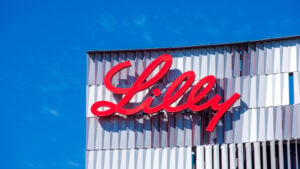
Even in the future, blue-chip stocks will be among the most reliable of all the available stocks. That’s because they belong to businesses and companies with solid financials and growth potential. They are also the perfect options for investors looking to make low-risk, stable investments that will yield massive returns over the long run.
While that is the case, many blue-chip stocks are high-cap, and investing in them may take a lot of capital that most investors simply do not have or are unwilling to fork out. Such investors should look towards future blue-chip stocks, which are often cheaper and possess the same qualities.
This article highlights three future blue-chip stocks that could yield huge dividends in the second half of the year and beyond.
Walmart (WMT)

Walmart (NYSE:WMT) is an American retail giant with a chain of hypermarkets, discount department stores and grocery stores scattered across the country. There are a handful of companies in the retail business with a more substantial presence than Walmart, especially in the American market, where it controls most of the market share.
Despite its firm grip on the American retail scene, Walmart has shown a commitment to continuing to grow and improve the range of its products and services. Over the last few years, it has launched several efforts to expand its business, such as the launch of its subscription service, Walmart+. There is also talk of acquiring popular television maker Vizio.
Another example of Walmart’s growth potential is its consistent expansion efforts. The company anticipates opening or converting over 100 stores across the US in the next five years. These stores will likely continue popular Walmart traditions, such as massive sales events, price slashes and discounts.
On the financial front, Walmart is enjoying yet another year of high profitability. According to its latest quarterly report, the company saw a 6% increase in its consolidated revenue, generating an impressive $161.5 billion.
Furthermore, its e-commerce and advertising business also grew significantly, increasing by 21% and 24%, respectively.
Jefferies Financial Group (JEF)

Jefferies Financial Group (NYSE:JEF) is an independent investment bank and financial services provider based in New York, New York. It is a global leader in the investment banking and capital markets scene and boasts deep expertise in various sectors, such as investment banking, global research and strategy, alternative asset management, wealth management, equities, and fixed income.
Jefferies Financial Group is a beacon of profitability. Since going public in 1983, the bank has doubled the returns of the S&P 500, with $100 invested, then being $12,775 now.
Furthermore, like most blue-chip companies, Jefferies Financial Group is well known for paying and growing its dividend. Not only do its dividends yield 2.8% a year, but it has increased the payout at a compounded annual growth rate of 22% in the last five years, making it one of the highest-yielding stocks on the market.
A look at the bank’s finances paints the whole picture. According to its latest quarterly report, Jefferies Financial Group has enjoyed a great year, generating impressive numbers across key metrics like revenue and income. It generated a net revenue of $1.66 billion and increased its quarterly cash dividend by 16.7%.
Eli Lilly (LLY)

Eli Lilly (NYSE:LLY) is a pharmaceutical company based in Indianapolis, Indiana. It is notable for producing medicine for treatments in areas such as cancer, diabetes, bone muscle joint, cardiovascular, endocrine, immunology, neuroscience and obesity. Its drugs are also available in over 100 countries across the globe.
Thanks to its diverse business and offerings across various therapeutic areas, Eli Lilly emerges as a blue-chip stock with high potential. It is especially bullish in the diabetes and obesity control sector thanks to the success of its flagship diabetes treatment, Trulicity.
According to its latest quarterly report, the drug generated $1.5 billion in revenue in the first quarter of the year only. The report also indicates that the company’s newest diabetes drug, Mounjaro, is also performing well in the market, generating $1.8 billion in revenue in the same period.
Another treatment, Zepbound, which is similar to Mounjaro but also treats weight loss, generated $517 million in the first quarter of the year as well.
With a market cap of $730 billion, Eli Lilly is one of the most profitable companies in the pharmaceutical industry and one of the most valuable healthcare stocks.
On the date of publication, Joel Lim did not have (either directly or indirectly) any positions in the securities mentioned in this article. The opinions expressed in this article are those of the writer, subject to the InvestorPlace.com Publishing Guidelines.
On the date of publication, the responsible editor did not have (either directly or
indirectly) any positions in the securities mentioned in this article.





